Rattanaphon Chaisaen
MixNet: Joining Force of Classical and Modern Approaches Toward the Comprehensive Pipeline in Motor Imagery EEG Classification
Sep 06, 2024Abstract:Recent advances in deep learning (DL) have significantly impacted motor imagery (MI)-based brain-computer interface (BCI) systems, enhancing the decoding of electroencephalography (EEG) signals. However, most studies struggle to identify discriminative patterns across subjects during MI tasks, limiting MI classification performance. In this article, we propose MixNet, a novel classification framework designed to overcome this limitation by utilizing spectral-spatial signals from MI data, along with a multitask learning architecture named MIN2Net, for classification. Here, the spectral-spatial signals are generated using the filter-bank common spatial patterns (FBCSPs) method on MI data. Since the multitask learning architecture is used for the classification task, the learning in each task may exhibit different generalization rates and potential overfitting across tasks. To address this issue, we implement adaptive gradient blending, simultaneously regulating multiple loss weights and adjusting the learning pace for each task based on its generalization/overfitting tendencies. Experimental results on six benchmark data sets of different data sizes demonstrate that MixNet consistently outperforms all state-of-the-art algorithms in subject-dependent and -independent settings. Finally, the low-density EEG MI classification results show that MixNet outperforms all state-of-the-art algorithms, offering promising implications for Internet of Thing (IoT) applications, such as lightweight and portable EEG wearable devices based on low-density montages.
* Supplementary materials and source codes are available on-line at https://github.com/Max-Phairot-A/MixNet
ANet: Autoencoder-Based Local Field Potential Feature Extractor for Evaluating An Antidepressant Effect in Mice after Administering Kratom Leaf Extracts
Sep 17, 2022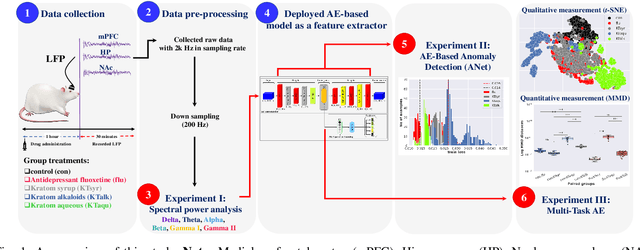
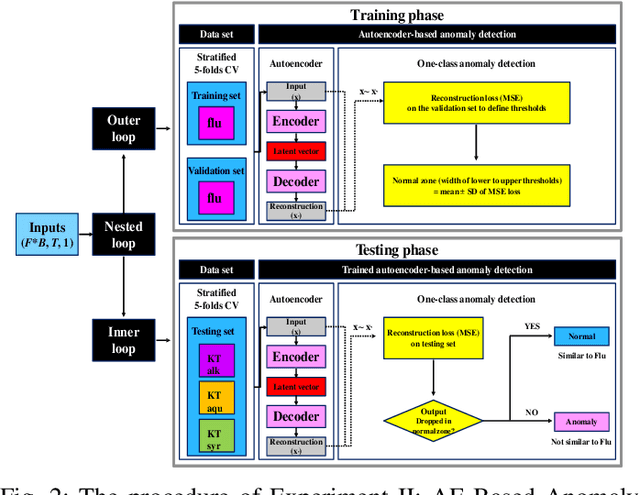

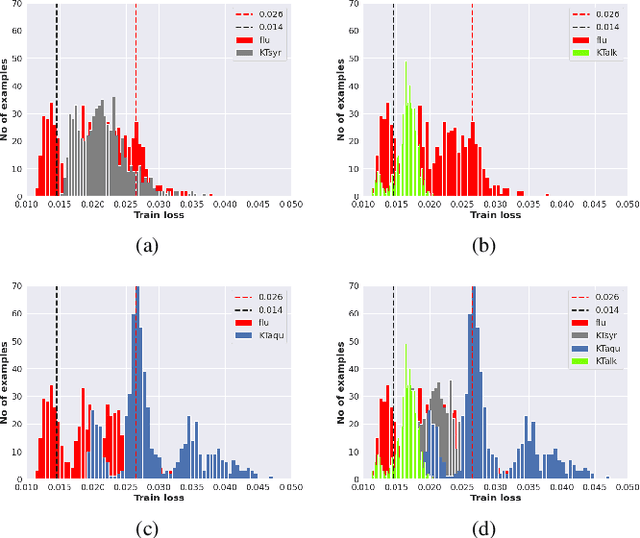
Abstract:Kratom (KT) typically exerts antidepressant (AD) effects. However, evaluating which form of KT extracts possesses AD properties similar to the standard AD fluoxetine (flu) remained challenging. Here, we adopted an autoencoder (AE)-based anomaly detector called ANet to measure the similarity of mice's local field potential (LFP) features that responded to KT leave extracts and AD flu. The features that responded to KT syrup had the highest similarity to those that responded to the AD flu at 85.62 $\pm$ 0.29%. This finding presents the higher feasibility of using KT syrup as an alternative substance for depressant therapy than KT alkaloids and KT aqueous, which are the other candidates in this study. Apart from the similarity measurement, we utilized ANet as a multi-task AE and evaluated the performance in discriminating multi-class LFP responses corresponding to the effect of different KT extracts and AD flu simultaneously. Furthermore, we visualized learned latent features among LFP responses qualitatively and quantitatively as t-SNE projection and maximum mean discrepancy distance, respectively. The classification results reported the accuracy and F1-score of 79.78 $\pm$ 0.39% and 79.53 $\pm$ 0.00%. In summary, the outcomes of this research might help therapeutic design devices for an alternative substance profile evaluation, such as Kratom-based form in real-world applications.
A Pilot Study on Visually-Stimulated Cognitive Tasks for EEG-Based Dementia Recognition Using Frequency and Time Features
Mar 05, 2021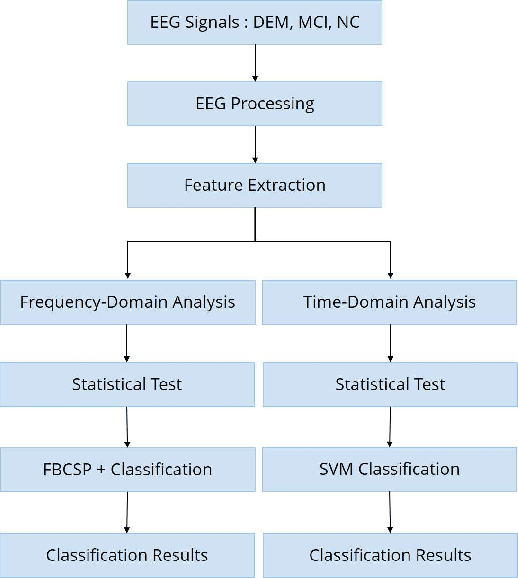
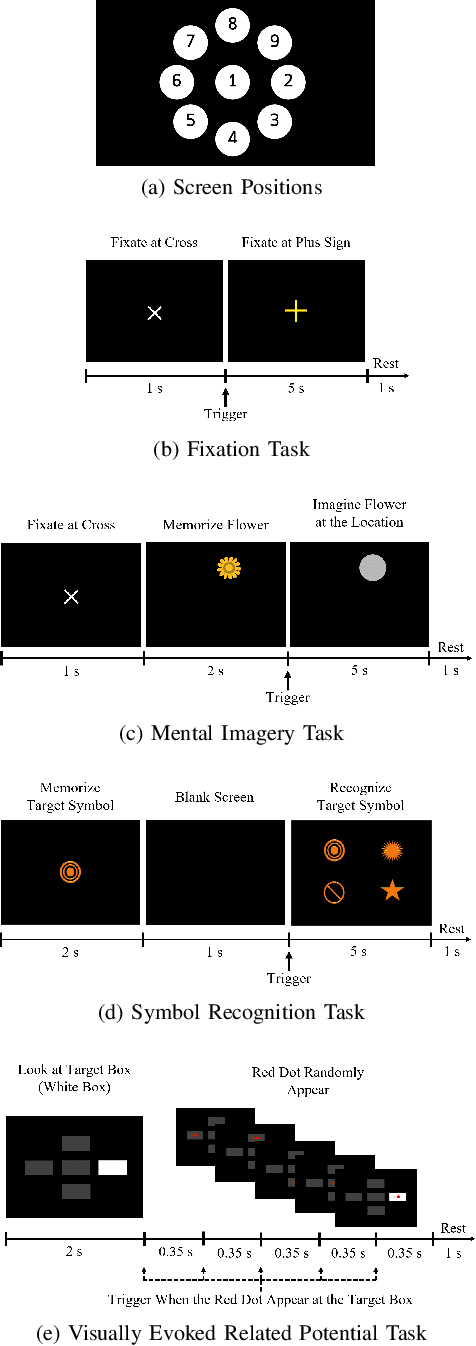
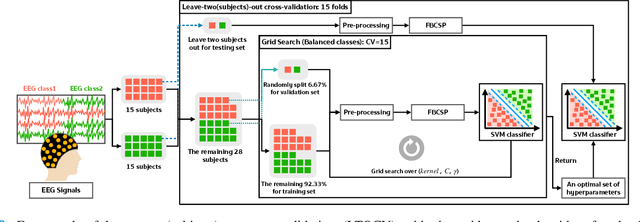
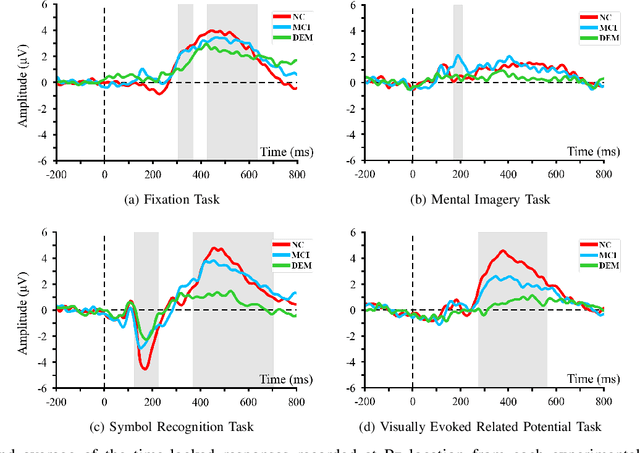
Abstract:Dementia is one of the main causes of cognitive decline. Since the majority of dementia patients cannot be cured, being able to diagnose them before the onset of the symptoms can prevent the rapid progression of the cognitive impairment. This study aims to investigate the difference in the Electroencephalograph (EEG) signals of three groups of subjects: Normal Control (NC), Mild Cognitive Impairment (MCI), and Dementia (DEM). Unlike previous works that focus on the diagnosis of Alzheimer's disease (AD) from EEG signals, we study the detection of dementia to generalize the classification models to other types of dementia. We have developed a pilot study on machine learning-based dementia diagnosis using EEG signals from four visual stimulation tasks (Fixation, Mental Imagery, Symbol Recognition, and Visually Evoked Related Potential) to identify the most suitable task and method to detect dementia using EEG signals. We extracted both frequency and time domain features from the EEG signals and applied a Support Vector Machine (SVM) for each domain to classify the patients using those extracted features. Additionally, we study the feasibility of the Filter Bank Common Spatial Pattern (FBCSP) algorithm to extract features from the frequency domain to detect dementia. The evaluation of the model shows that the tasks that test the working memory are the most appropriate to detect dementia using EEG signals in both time and frequency domain analysis. However, the best results in both domains are obtained by combining features of all four cognitive tasks.
MIN2Net: End-to-End Multi-Task Learning for Subject-Independent Motor Imagery EEG Classification
Feb 07, 2021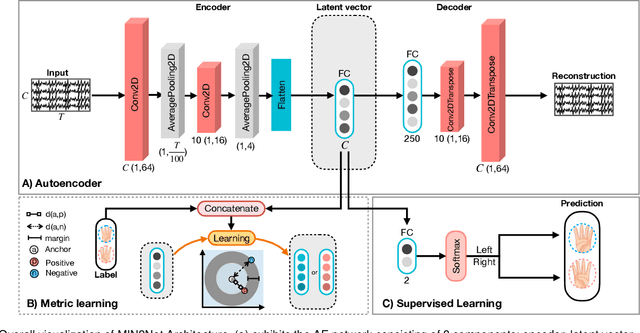
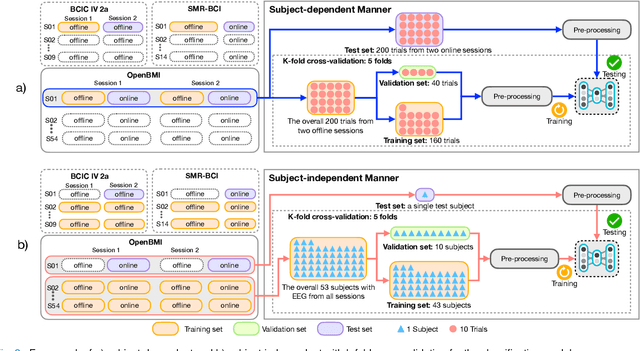
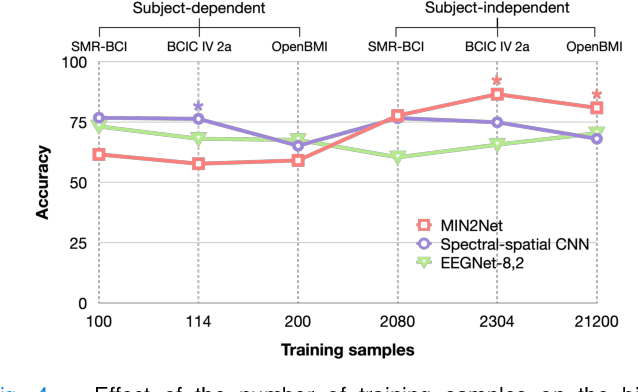
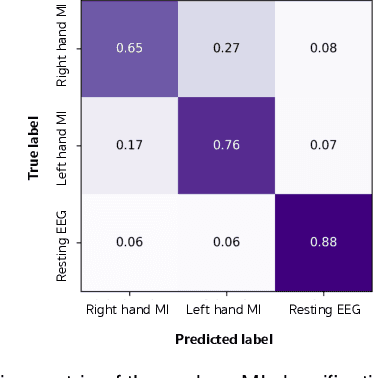
Abstract:Advances in the motor imagery (MI)-based brain-computer interfaces (BCIs) allow control of several applications by decoding neurophysiological phenomena, which are usually recorded by electroencephalography (EEG) using a non-invasive technique. Despite great advances in MI-based BCI, EEG rhythms are specific to a subject and various changes over time. These issues point to significant challenges to enhance the classification performance, especially in a subject-independent manner. To overcome these challenges, we propose MIN2Net, a novel end-to-end multi-task learning to tackle this task. We integrate deep metric learning into a multi-task autoencoder to learn a compact and discriminative latent representation from EEG and perform classification simultaneously. This approach reduces the complexity in pre-processing, results in significant performance improvement on EEG classification. Experimental results in a subject-independent manner show that MIN2Net outperforms the state-of-the-art techniques, achieving an accuracy improvement of 11.65%, 1.03%, and 10.53% on the BCI competition IV 2a, SMR-BCI, and OpenBMI datasets, respectively. We demonstrate that MIN2Net improves discriminative information in the latent representation. This study indicates the possibility and practicality of using this model to develop MI-based BCI applications for new users without the need for calibration.
 Add to Chrome
Add to Chrome Add to Firefox
Add to Firefox Add to Edge
Add to Edge